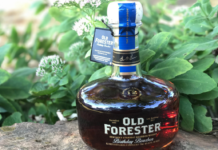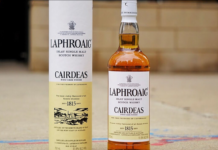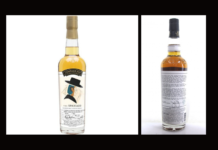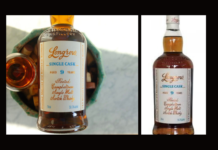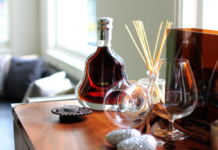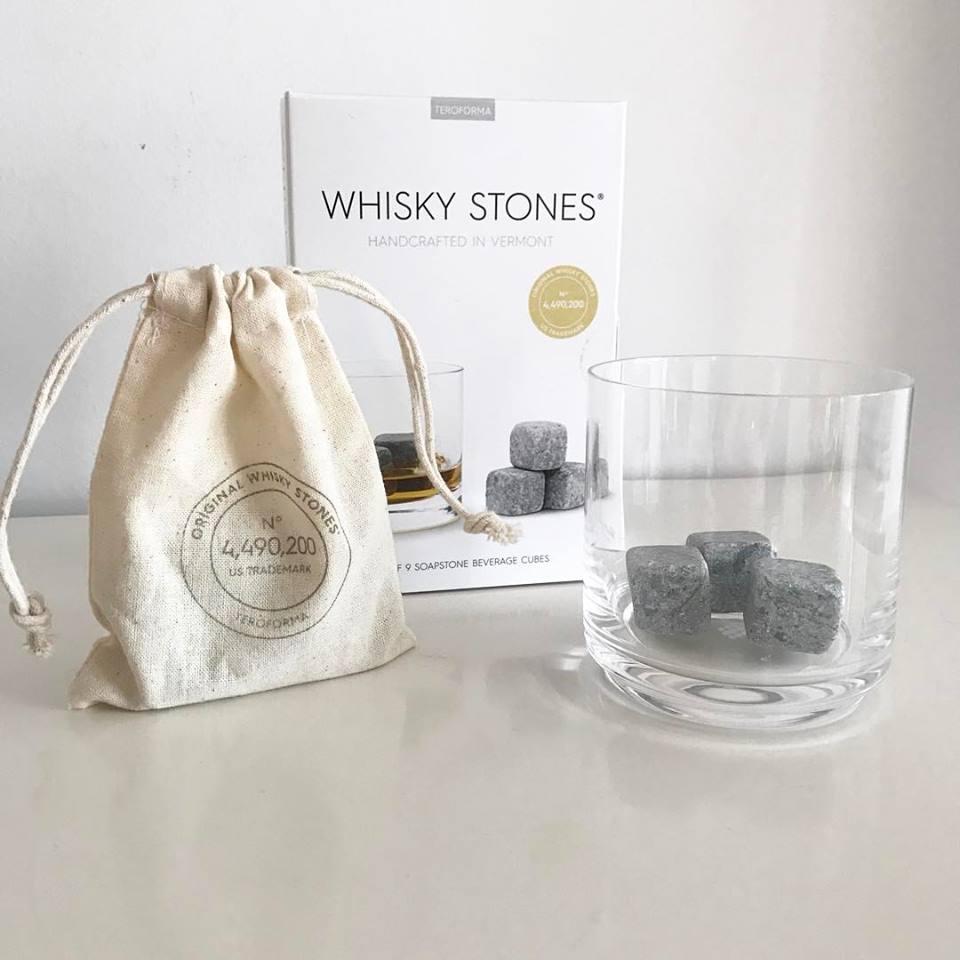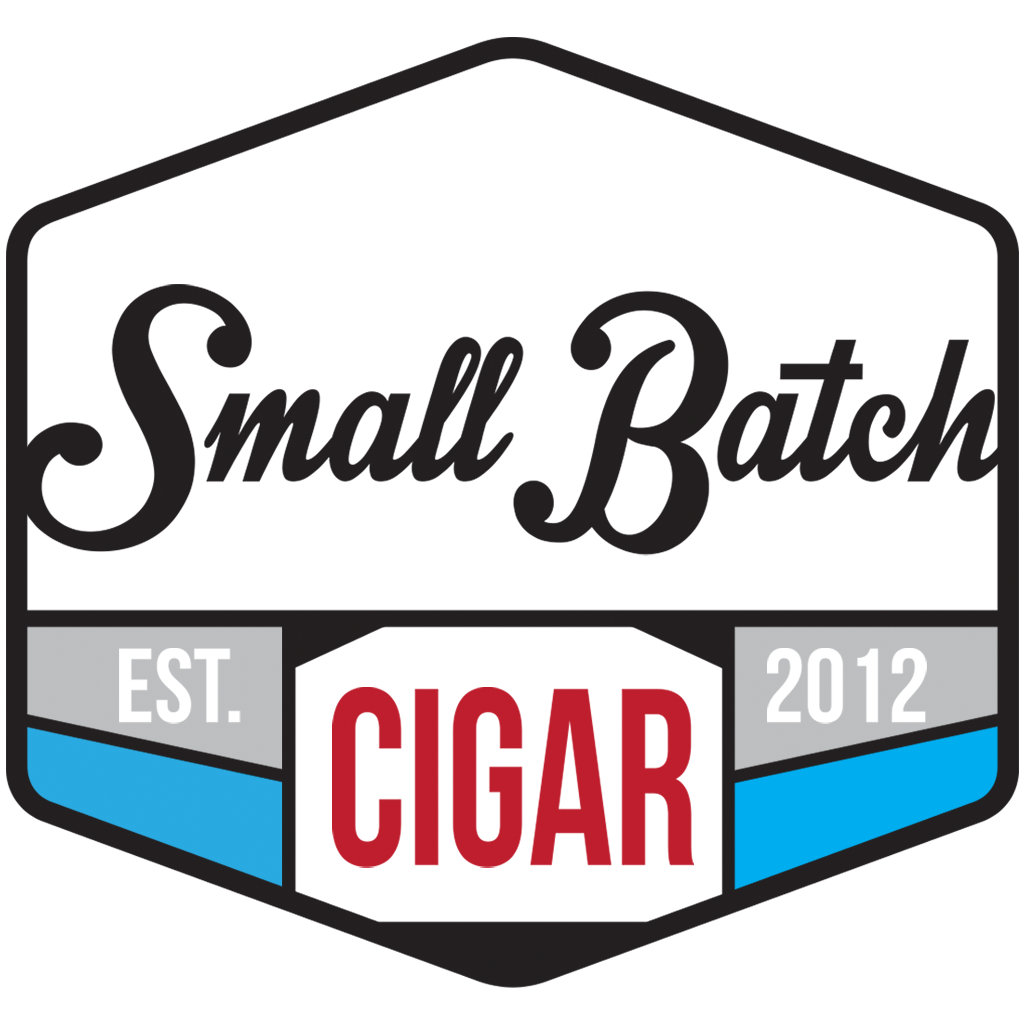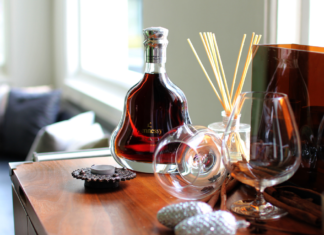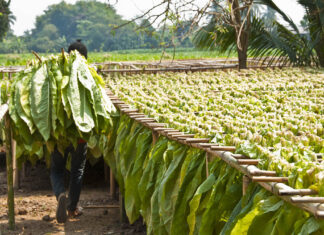Interview with Taste the Dram /// Andrew Hellman, Co-Founder & CEO of Teroforma
Please tell us about yourself. Maybe a quick glimpse into what you were up to before coming out with Whiskey Stones.
AH: Before starting my design company, Teroforma, and inventing Whisky Stones® beverage cubes, I was an M&A banker with UBS based out of London and New York. Whisky Stones came about by accident. I had discovered an old set of stones in a leather pouch when cleaning out my Swedish grandfather’s summer home after he had passed away. I kept them simply because they were beautiful and a bit strange. It wasn’t until years later that I found out they were typically hung outside the kitchen door in Swedish homes in the early 1900s and used as a way to cool piping hot liquids coming off the stove top – things like soup and such.
By that time I had been in London for a while and had learnt quite a bit about whisky during frequent business trips to Edinburgh. I would visit distilleries, attend tastings, and just generally try to learn as much as possible. One of the first things you learn from the Scottish is that you should never dilute their famous spirit with ice. I simply wondered if there might be another way to chill whisky without ice, remembered my grandfather’s cooling stones, and just put two and two together. The outcome, of course, was Whisky Stones.
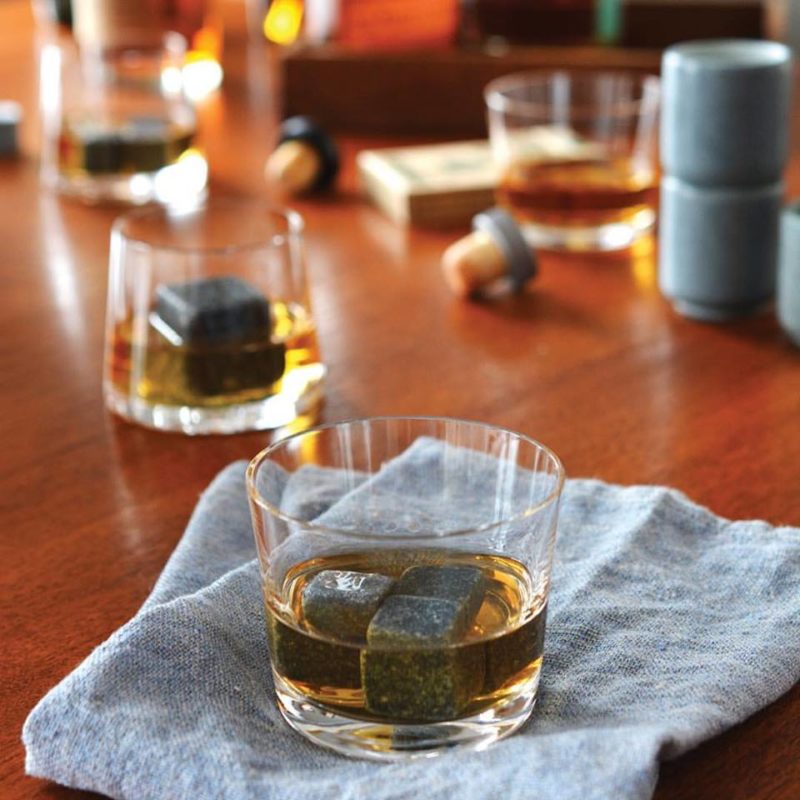 Tell us about the company Teroforma. What was your vision. Is there anyone else involved besides yourself?
Tell us about the company Teroforma. What was your vision. Is there anyone else involved besides yourself?
AH: When my Swedish wife Anna and I moved back to the US from Europe in 2004, we bought a house and looked around for furniture and items to fill it with that reflected our Scandinavian-inspired tastes for simple, clever, well-made things. To our astonishment, we found very little that we liked in the US market at that time. This all now seems obvious, but in 2004, we were a few years ahead of the resurgence of mid-century modern functional minimalism and the US market back then was filled with a lot of home and housewares items that were really pretty awful. So, we did a bunch of research and found that there was indeed a pretty big market gap that we felt we could fill. So we created Teroforma to do just that with a very simple mission in mind: something worth having should be something worth keeping.
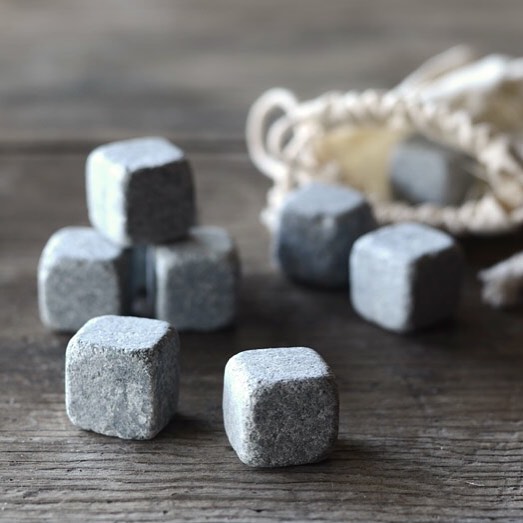 Are the whiskey stones your best-selling product? If so, what do you think caused such success?
Are the whiskey stones your best-selling product? If so, what do you think caused such success?
AH: The short answer is yes, but not quite as big a percentage of sales as they used to be just given our introduction of other items over time. Right now, our Wine Twirls and Bottleneck Mini collections do just as well as the Whisky Stones. Wine Twirls were a natural evolution from our Whisky Stones as we started to explore how to chill beverages beyond Whisky. Essentially, we designed a solution for our friends who are wine lovers! Other than that, Twirls & Stones are practically opposites from a design perspective. Wine Twirls are very modern and almost futuristic looking. I love the visual contrast between the two, to be honest. Bottleneck Minis are inspired by British Christmas Crackers. It’s a party favor with a clever message that hangs like a bottle tag, right over the neck of your bottle. It makes that gift of a bottle that much more special.
All that being said, Whisky Stones continue to grow each year and to sell amazingly well for a wide range of retail partners that we work with. You have to see that in context though. When we invented the product back in 2007, it was, obviously, entirely new. Nobody had ever seen anything like it. It has since given rise to an entire industry of mimics, copycats, and, unfortunately, unscrupulous companies which try to step all over our intellectual property. When you invent something, you are either wrong or copied. I suppose I would rather be copied than wrong, which is a good thing. I think the Whisky Stones became such a phenomenal success for a few reasons: a) men are hard to buy for, especially at a $20 price point, and Whisky Stones are a perfect “man gift”, b) Whisky Stones have an obvious intrinsic permanence about them that I feel like people trust, and c) they are a marketing dream – “whisky on the rocks” get it? Some things just kind of sell themselves and I am lucky to have invented one of those.
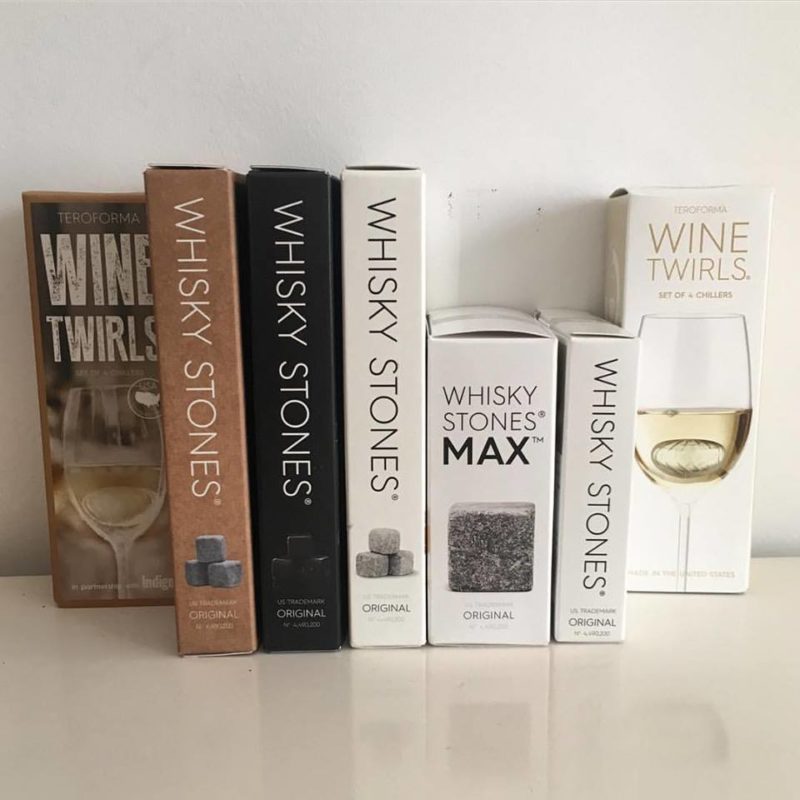 What is your role and what are your day to day activities?
What is your role and what are your day to day activities?
AH: Nominally, I am co-founder and CEO. But that’s really just for the sake of clarity with our business partners. What I really am is a navigator and a problem-solver. Teroforma is a small team with a large network of associated retailers, sales people, designers, manufacturers and product developers. At any given time, we are probably undertaking projects or doing business in at least 5 or 6 time zones, so there is always a lot to do. I tend to focus on the bigger picture and our relationships with key vendors and buyers while my wife and partner Anna and her team tend to focus more on the day to day processes that keep us lean and growth oriented. We collaborate together on creative direction for the brand and have always found that to be a pretty seamless partnership. Although that is not to say that it is always easy to work with your partner or spouse. It can be a challenge, but after 10 years together day in and day out, we are starting to get the hang of it.
What led you to start your own business and become an entrepreneur?
AH: There is the business logic that I mentioned, but mainly it is an inexplicable drive to follow your own path. I have been asked for advice from aspiring entrepreneurs and usually wave off because it is such an individual thing and, I am sure like many entrepreneurs, I always feel I have more to accomplish. The one thing I will say is that if you can imagine doing something else for one more second, you are not even close to ready to start your own business. The mission has to be all-consuming and if it isn’t, then find something that is. That may very well be working for somebody else, and there is absolutely nothing wrong with that. In fact, sometimes I envy people who have a “job”. Having a mission can be exhausting, but what matters is that you find a way to hit your long stride in whatever you do – something that you can give your full measure of commitment and energy. There is no better feeling.
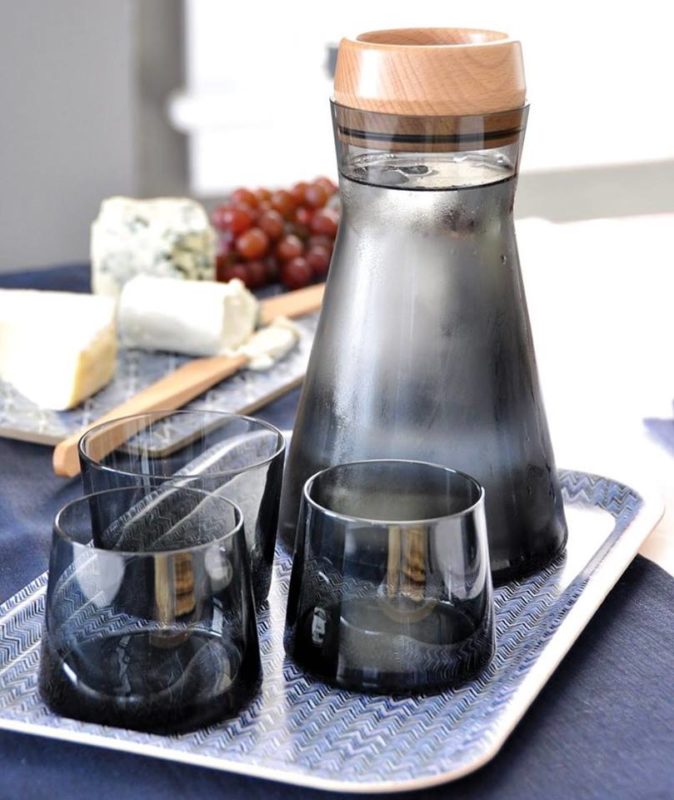 Do you have a personal relationship with whisky? Love at first sip perhaps? Can you tell us about your first dram? Neat or on the rocks (whiskey rocks)?
Do you have a personal relationship with whisky? Love at first sip perhaps? Can you tell us about your first dram? Neat or on the rocks (whiskey rocks)?
AH: Nobody has a love-at-first-sip relationship with whisky. It’s probably more realistically a love-despite-first-sip relationship. It’s a steep appreciation curve with whisky, but that’s part of what makes getting to the top of it such a joy. I suppose I began drinking whisky because my father and my favorite uncle, Anders who I am named after, are big whisky drinkers, and I guess I wanted to be a bit like them at first.
It wasn’t an easy start as they are both Islay aficionados. It was almost certainly Ardbeg or Laphroaig and those remain my favorite. It’s not Gatorade after all. When you drink whisky, there is always a bit of ceremony: a selection of the right glass, a discussion of what kind of whisky best suits the moment, a natural thinning of the herd as those who do not like it leave the room or go find something else to do, there is the pouring, the toast, and then the first sip. It’s a bonding thing and something that connects those who enjoy it. My uncle Anders passed away a few years ago, but whenever I pour a Friday night dram, after a long week at work, I never fail to raise my first glass to him. I suppose that says something.
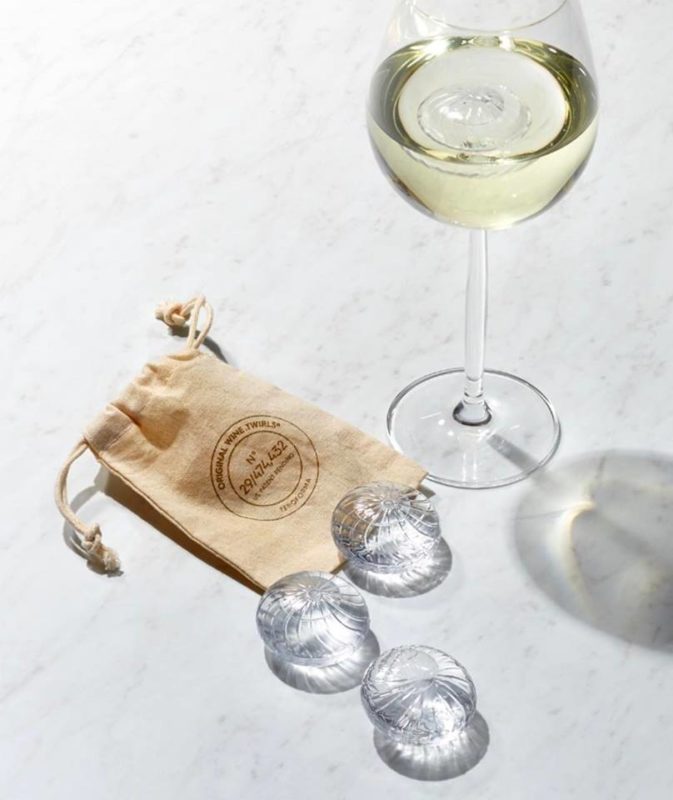 What 3 words would you use to describe your products?
What 3 words would you use to describe your products?
AH: Simple. Thoughtful. Well-made.
Your website Teroforma.com has many products in different categories. Who comes up with the designs and concepts?
AH: Anna and I kind of work like two halves of a whole when it comes to product concepting and development. Neither of us are trained technical designers but we have a very good idea of what we like, and tend to think very methodically about how something might be made. At this point, we have developed products in a wide range of materials, using an equally wide range of techniques, so we kind of know at the outset how something might be made. When one of us has an initial idea, the other kind of naturally falls back to let them lead while providing reassurance, challenging assumptions, and generally trying hard to make the idea a success.
Sometimes, you end up looking at each other, laughing (or arguing), and scrapping the idea because you’ve figured out something that won’t work or doesn’t make sense. Other times, you keep the process going until you have nothing left to refine. Good products should feel discovered, not designed, and that is naturally a reductive process whereby you work to reveal the essence of the idea. Once you’ve got that essence nailed, our job is really to hold on to it very tightly and make sure that it is that essence that defines that product.
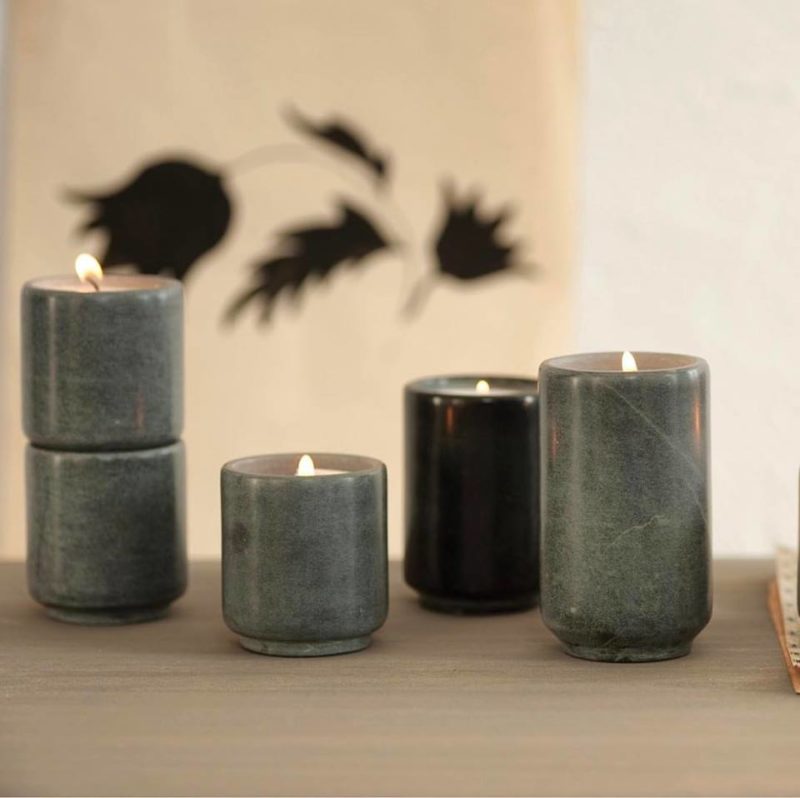 Whisk(e)y is becoming quite a global phenomenon, what would you attribute to such a big boom as of late?
Whisk(e)y is becoming quite a global phenomenon, what would you attribute to such a big boom as of late?
AH: Whisky Stones of course. Actually, I think that there is a natural reversion to simplicity that people indulge when the pace of technological change is so rapid. More so than any other spirit, whisky is an absolute. Initially, it divides people, so I think it is natural that those who like it come together around their enjoyment and it is that enjoyment, rather than the whisky itself per se, that creates the excitement that others want to be a part of. When you have the ease of assembly around shared tastes that social media provides, I kind of feel like you have a perfect storm.
Where do you see your company 5/10 years from now ? What do you want to be known for?
AH: No idea and that’s a big part of the fun. Hell, we actually may wake up some time next week with our mail being delivered by artificially intelligent, autonomous robots, so planning too far ahead is nowhere near the strategic necessity it once was. The smartest thing you can do is know who you are and then have a way of efficiently reevaluating which road looks best because it changes all the time. In terms of being known for anything, I suppose it is the courage to strike out on my own path and the wisdom to know the value of simplicity. I also make an exceptional Beef Wellington when the need arises, so there’s that.
Anything else you’d like to share with Tastethedram readers?
AH: Nothing, not even whisky, follows a statement about Beef Wellington.





